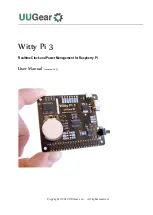
Communication
6.3 Acyclic Communication
Control Units CU240S
Operating Instructions, 07/2008 - FW 3.2, A5E00766042B AD
141
Acyclic communication via PROFInet (Base mode parameter access)
In the base mode parameter access, the requests and the replies are transmitted acyclically
by use of the "Acyclic Data Exchange" mechanism of the Communication System.
It allows simultaneous accessing by other PROFInet IO Supervisors (e.g. start-up tool).
Acyclic PROFInet functions
The different communication devices, or different modes of data exchange, are represented
by appropriate channels in the SINAMICS G120 range of inverters:
● Acyclic data exchange with the IO controller uses the functions READ and WRITE (with
0xB02E)).
● Acyclic data exchange using a SIEMENS start-up tool (IO supervisor, e.g. STARTER).
The start-up tool can acyclically access parameter and process data in the inverter.
● Acyclic data exchange with a SIMATIC HMI (second IO supervisor). The SIMATIC HMI
can acyclically access parameters in the inverter.
● Instead of a SIEMENS start-up tool or SIMATIC HMI, an external IO supervisor as
defined in the acyclic parameter channel according to PROFIdrive Profile version 4.1
(with 0xB02E) can access the inverter.
See also
http://www.profibus.com/organization.html (http://www.profibus.com/organization.html)
Cyclic Communication (Page 128)
6.3.1
Parameter Channel
Properties of the parameter channel
● One 16-bit address each for parameter number and subindex.
● Concurrent access by several masters (e.g. commissioning tool).
● Transfer of different parameters in one access (multiple parameter request).
● Transfer of complete arrays or part of an array possible.
● Only one parameter request is processed at a time (no pipelining).
● A parameter request/response must fit into a data set (max. 240 bytes at DPV1).
● The task or response header are use data.
Structure of parameter request and parameter response
A parameter request consists of three segments:
● Request header
ID for the request and number of parameters which are accessed.
















































